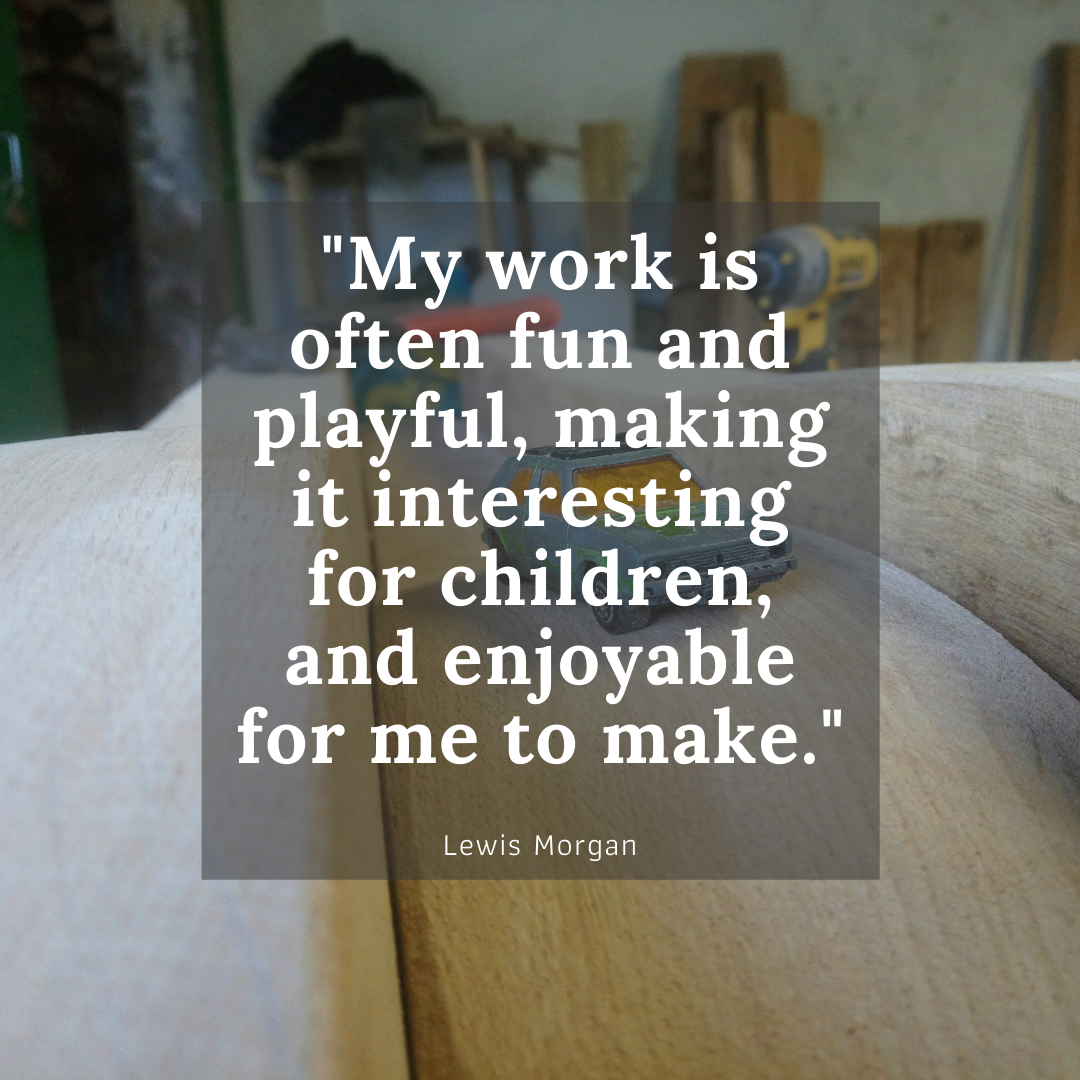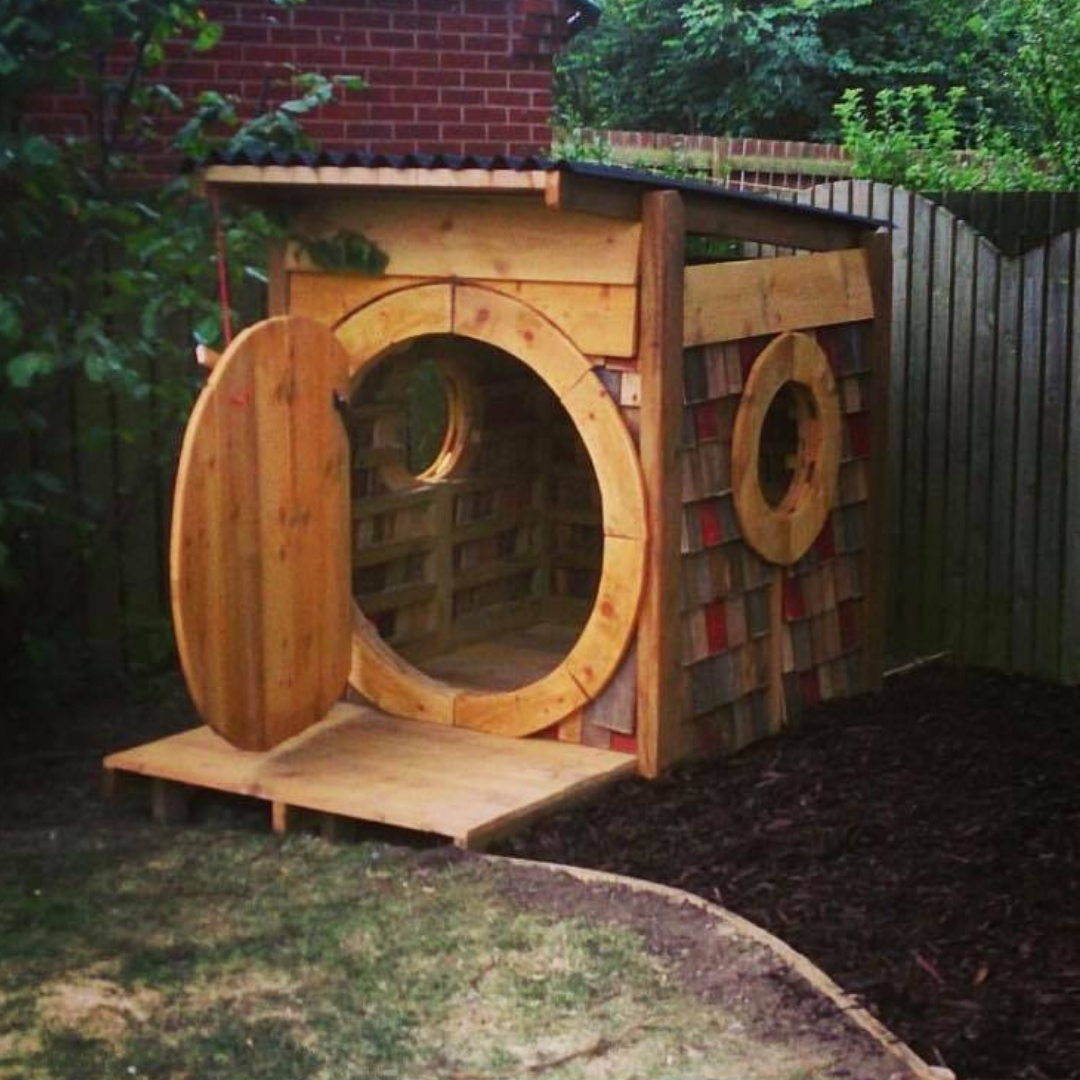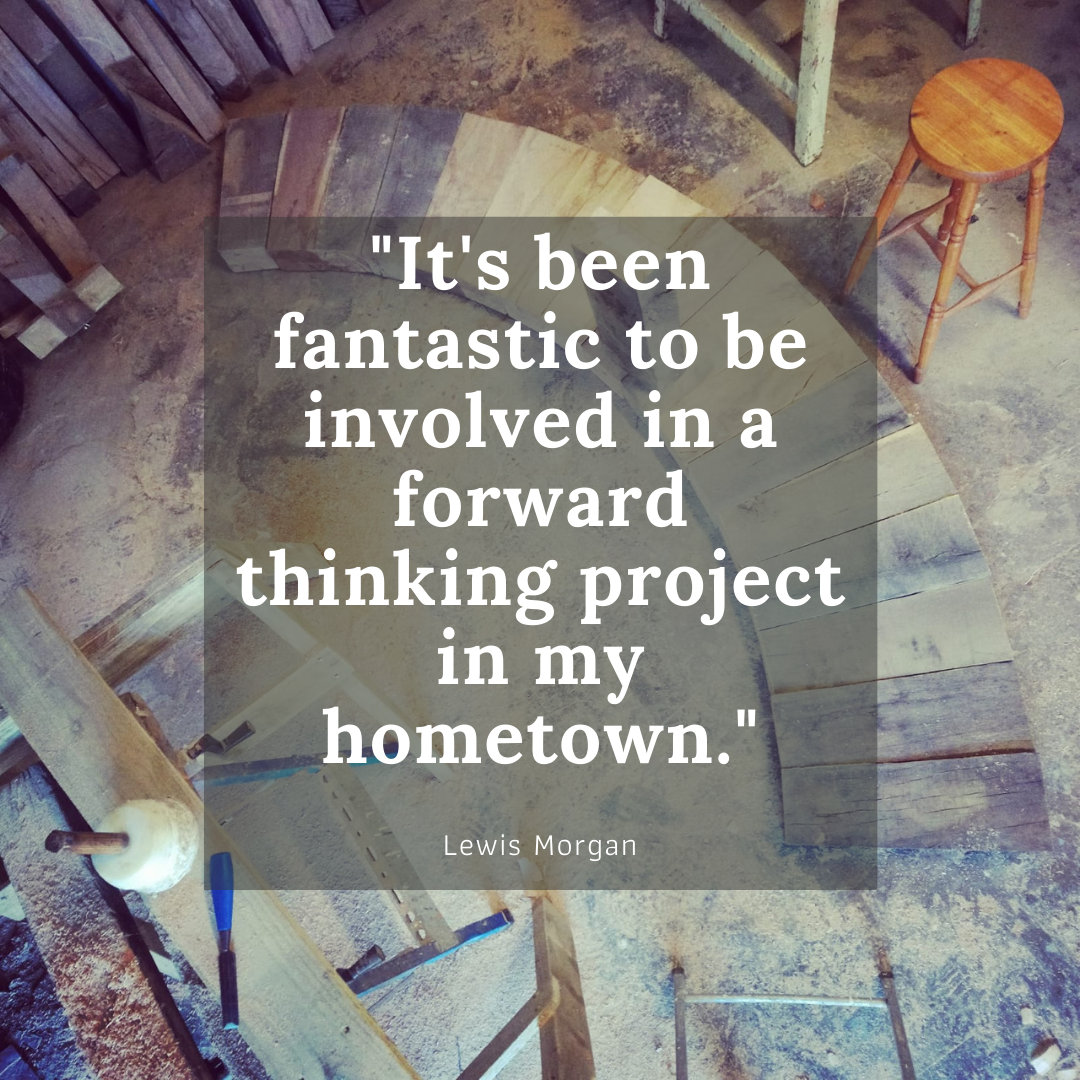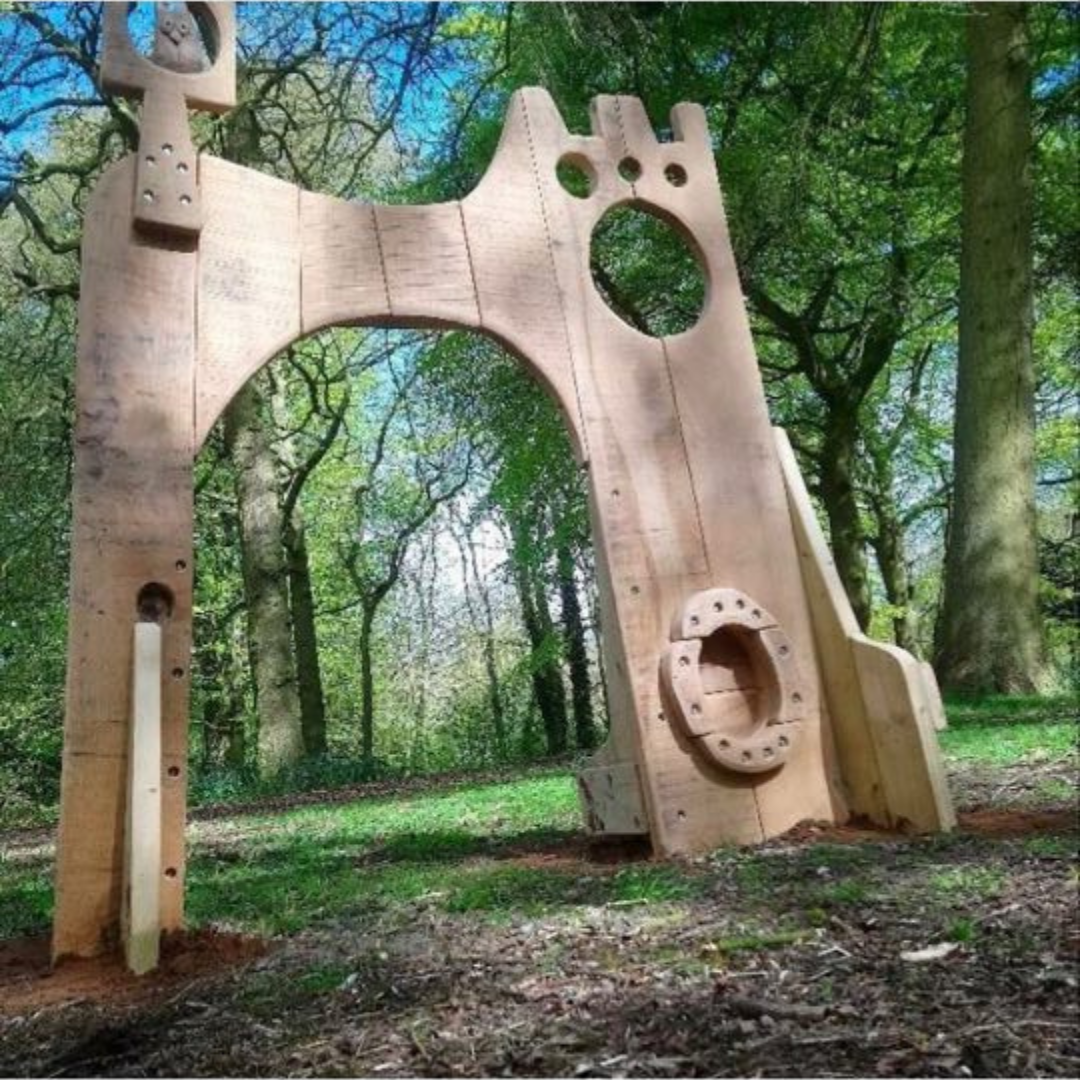Art of Protest: Sculpting Trees with Lewis Morgan
We had the privilege of sitting down with Doncaster native Lewis Morgan to speak with him about his background as a designer and sculptor. It was no coincidence that Lewis Morgan joined forces with AOP Projects and Doncaster Creates to transform Baxter Park because of his vision for sustainability and his natural talent with the elements. Read on to get to know Lewis and understand his process and influence….
Can you tell us your name and what you do as a woodworker and designer?
I'm Lewis Morgan, but I operate as Lewis Morgan Creative Timber Ltd. I make all sorts of bespoke timber structures. I do a lot of work in schools, inside and outside that allow children to use their environment for learning. My work is often fun and playful, making it interesting for children, and enjoyable for me to make. I also make treehouses and carry out landscaping work, sculpture, seating and benches too. I have a strong environmental angle to my work, as I develop wildlife areas in schools too.
What inspires your designs and how does that relate to the function of your finished products?
As all my work is bespoke the requirements of a customer or client start the process. Although what I do is creative it has to perform a function too, and get a lot of satisfaction of seeing a structure or space get used.
What types of materials do you use? Is there anything unique or sustainable about the materials?
I mostly use pressure treated timber or oak. These are durable and sustainably sourced, as well as being affordable. I really like oak though. I like how it's an organic material that has very industrial and architectural connotations. The oak I used is forested sustainably in Europe.
How does your work relate or traverse into art?
When I start a project, I take on board the requirements of a customer or client, but then when I'm designing something, I think 'what's in it for me' - this is the bit where I design, sketch and plan the things that I think will keep the making process interesting. It could be some bizarre animals for a school structure, or as in the case of Baxter Park, the surrounding transportation network near the park in a fairly sculptural way. A lot of my work is like mini architecture, and I find that fascinating too.
How do people react to your products/art and how does that feed back into your creativity?
Hopefully it's usually positive! A lot of clients or schools ask me back so that's usually a good sign. I suppose I put pressure on myself to ensure the materials, design and manufacture are done well. After that, I move on. I can't account for what people may or may not think about what I've done. I don't like revisiting old work, although it's lovely to go back to a school and see children playing on something I've made.
What are you currently working on?
I've been working on a sculptural seating project for Baxter Park in Doncaster over the past year and a bit. It's been a really good project for me as it relates to the environmental work I've been doing over the past ten or so years and the oak public art projects I worked on before that. I've been developing work that can be seating as well as retaining walls for planting and landscaping, whilst encouraging creative and imaginative play in children. The local authority wanted to look at how people engage in public spaces in a different way, as opposed to the stereotypical 'bench for sitting, play equipment for playing on'. This approach is now seen as a little out of date on the continent, so it's been fantastic to be involved in a forward thinking project in my hometown. Thematically the process was kick started by a brilliant engagement session with Town Fields Primary School, where the children came up with the notion of tracks and paths cut into the timber so children could bring toy vehicles to the structures to play, a bit like giant Brio. This tied in beautifully with the nearby transport networks by the river Don, where road, rail and river all intertwine. Donny had always had that connection with transportation, from the Roman Great North Road, to Doncaster Plant, and into the motorway age with the I Port and warehouse delivery hubs, so I feel the work references that if only in a small way. Although covid has done its best to scupper things I've really enjoyed staying in touch with the pupils from the school session, sending images of work in progress and a zoom video link from my workshop. One day soon I'll get to meet them on site so they can see the work. I'm looking forward to that.
Has Covid affected your practice and if so, how?
Ha. It's a bit of a funny one, this one. The first lockdown happened literally a couple of days after I'd stocked up on oak for the Baxter Park project. So I was in my own little world routing and chiselling away for the first lockdown, enjoying the springtime bird song and jetless blue skies. I know it was an awful time for a lot of people but I was very fortunate. I've stayed busy too, and as I work often on my own, and outside, I've been OK.
Do you see yourself as an artist/designer or craftsman or all of them?
All of them and none of them. I used to describe myself as a sculptor, but not all my work was sculpture. Some years ago I started calling myself a designer, and that felt better. The function of my work is very important to me so it fits I think. But then one of the most satisfying things I do is developing wildlife gardens in schools. I'd say to see wildlife inhabit a pond I've put in is the most satisfying thing I've done. Labelling yourself is not good. As long as you get to the end of the day with a sense of satisfaction, that is all that matters.
Who is your favourite designer/artist and which artists do you follow for inspiration?
Isamu Noguchi had an immaculate sense of shape and form, and was a master craftsman too. He saw play as learning through interaction with an environment, and saw play areas as sculpture. David Nash, too. He saw his wood sculpture as a relationship where he met the material halfway, allowing the timber to do its own thing. That is very influential to me. David Attenborough. I grew up watching `Life on Earth ' and 'Living Planet'. His attitude was 'if you want someone to care about the world, then show them how beautiful it is.'
@lewismorgancreative




